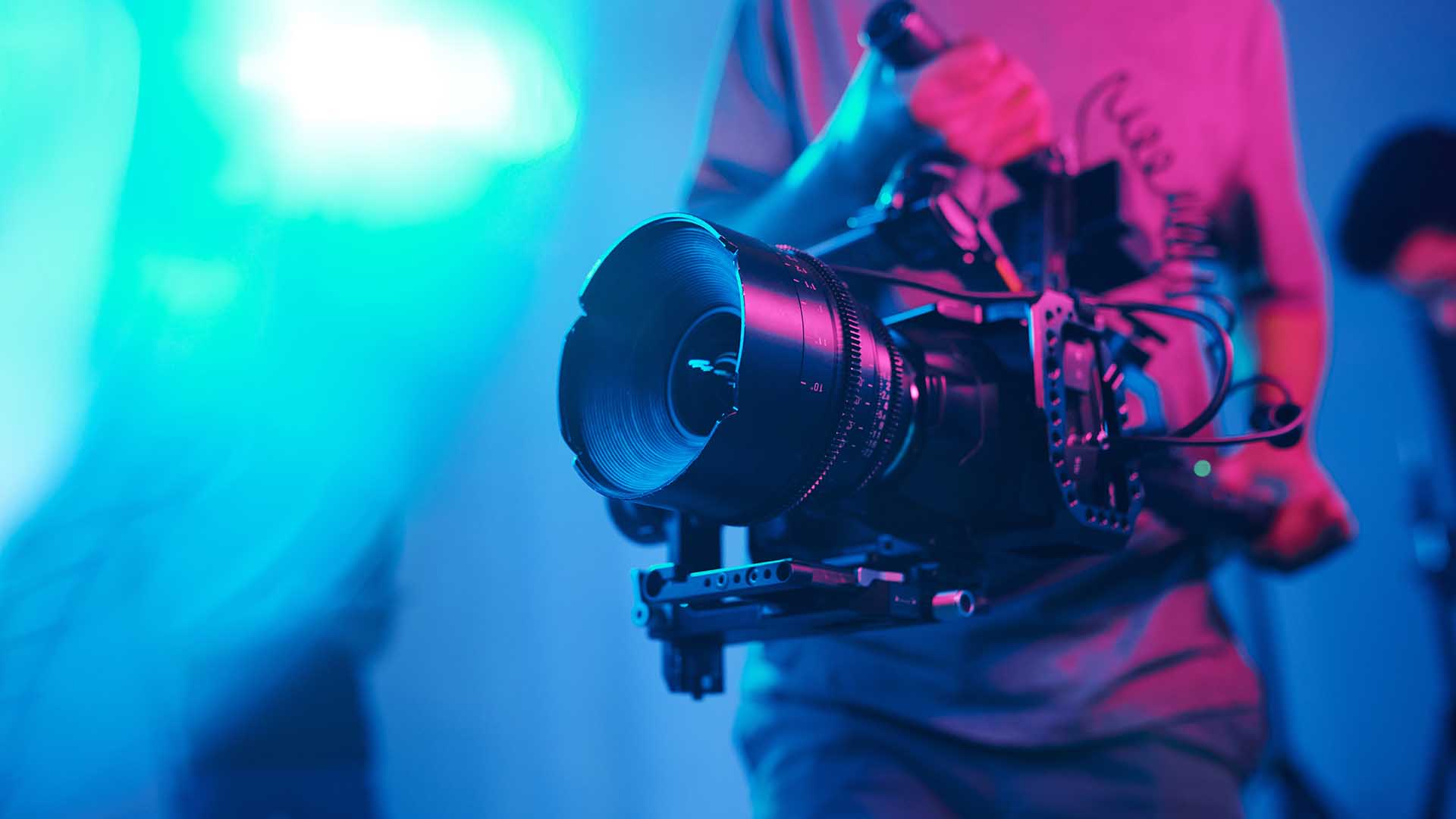
Videography Equipment For Beginners
Intro
At Lambda Films, we’ve been in the video game for over 15 years. The company was built on the back of a single beautiful workhorse, the Canon XL2; but over the years we’ve built our kit cupboard the same way we’ve built our company, bit by bit, project by project and with a healthy dose of trial and error.
Video has become the backbone of modern marketing, and if you’re setting out to start a production company or go freelance as a corporate videographer, the right kit is crucial, but it doesn’t mean burning through your savings. Whether you’re planning to shoot sleek corporate films, product explainers, or branded content, investing wisely in your gear will set the tone for your work. You don’t need to own a kit room on day one, start smart, build as you grow, and focus on gear that delivers versatility, reliability, and results.
In this post, we explore where the industry’s at right now and share our take on the best videography equipment for beginners, what you actually need to get started, without the fluff.
Our Resources
Before we get into the technical side of videography, have you checked out our other posts to help videographers make a start in the industry?
- If you’re at the start of your journey, here are the best video production courses to get you started in the video production industry.
- If you need additional support, consider hiring additional film crew.
- Where to find and book the best filming studios in London.
- Bolster your kit on a project-by-project basis from these production rental houses.
- Don’t underestimate the power of a good location, here is a list of the best location agencies in the UK.

1. Cameras
In corporate video, quality equals credibility. While you can technically shoot content on a smartphone, your audience can usually tell. For evergreen or outward-facing content, a solid camera will take you far.
A few good shouts to start with:
Canon C70
A hybrid workhorse. Great image quality and doesn’t require a full crew to operate. The C70 has built in ND filters making it adaptable for different shooting locations and light levels.
Sony FX30
Cinema-level visuals with excellent colour and detail. Big performance in a compact form. Be aware that the FX30 will require additional ND Filters and an audio adapter, if you’re planning to capture audio.
Panasonic GH6
A solid all-rounder for those dipping their toe into mirrorless territory. Again, the GH6 is a great starter camera but will require its own set of ND Filters and an audio adapter.
Our Advice
Not sure which to pick? That’s normal. We recommend looking at reputable pre-owned kit dealers like MPB. We’ve picked up great gear at great prices, and it’s a win-win, better for your budget and the planet.

2. Lenses
Lenses feel like a rabbit hole, and they can be. But if you’re just starting out, a small, well-chosen set will elevate your footage without overwhelming you.
Start with:
24–70mm f/2.8
The ideal lens for corporate video interviews, case studies, presentations or product explainers.
50mm f/1.8 or 1.4
This lens is excellent for executive portraits and interview setups requiring a large coverage area.
16–35mm
Best for establishing shots of office spaces, events, or product demonstrations in confined areas. This lens can be invaluable.
Our Advice
Unfortunately it’s not as simple as just picking a camera and a lens. Both these items will utilise a different mount system, so check the mounts on both your chosen camera and your intended lenses. Adapters may be required! We would also recommend investing in step up rings for VND filters or a matte box too.

3. Audio
Let’s be real, no one’s sitting through your beautiful footage if the audio makes them wince. Corporate video lives or dies on clean sound.
You’ll want:
Lavalier mics
Wireless lavalier systems (such as the Rode Wireless GO II) are discreet devices that clip to collars and capture audio pristinely, which is helpful for presentations or interviews.
Shotgun mic
A directional microphone (such as the Rode NTG4+) mounted on a boom pole or camera provides excellent ambient sound and backup audio.
Our Advice
Always monitor your audio, trust us; when we said trial & error, we meant it! Always keep a set of headphones as part of your kit, and at the very least, check the sound quality before recording.

4. Lighting
Corporate videos require consistent, clean lighting that doesn’t obstruct videos or disrupt the viewing experience.
A good starter video light kit will include:
LED Lights
Two to three adjustable, bi-colour LED lights with diffusion such as an Amaran Verge Max, Amaran Pano 120c, Amaran f22x or Nanlite PavoSlim 120b. These lights are available at different price points, but integral for versatile key and fill lighting.
Portable LED light
A compact LED light (such as the Godox SL-60W) with soft boxes quick and easy rigging in a pinch.
Our Advice:
Use adjustable lights, adjustable in both intensity and colour temperature. Being able to finely tune the output will save you a lot of headaches on the shoot. If possible, always have a number of diffusion options with you too, soft light works wonders.

5. Grip gear
Shaky footage can be seen as a sign of an amateur production, even if the camera quality is sublime.
Therefore, consider:
Tripod
Ensure it comes with a fluid head and good weight support. Good examples include the Manfrotto 190X with MVH500AH Fluid Head or the Benro A373F Aluminium Tripod with S6Pro Fluid Video Head.
Sliders or Dollies
Use these to create subtle movements to aid visual interest. Examples include the Neewer Carbon Fibre Camera Slider or the motorised Edelkrone SliderPLUS V5.
Gimbals
Gimbals work well for stabilising footage on the move or creating dramatic and kinetic movement. Consider the DJI RS 3.
Our Advice:
Like lenses, it’s not as simple as combining a camera and a piece of grip gear. The combination of the two work depends on the weight of the camera, so check weight limits and whether your chosen camera (and all external additions) comes in under the required weight limit.

6. The Essentials
These products are often overlooked but without them, you’re not shooting anything!
Memory cards & readers
External hard drives and storage media
Extra batteries and chargers

And, finally…
That includes our overview of videography equipment for beginners. But, remember, great gear helps, but a clear message, smart storytelling, and reliable delivery matter more.
You don’t need to buy everything up front. Start lean. Nail the fundamentals. Add gear as your confidence, and your productions, grow.
Some of the best investments we made early on weren’t the flashiest, they were the things that saved time, reduced headaches, or made our clients say “wow.”
And if you want to stretch the budget, consider the pre-loved route again or consider hiring so you can try before you buy.
Build your kit around how you work, not around a YouTube shopping list. And if you ever need help levelling up your production or want to outsource the headache altogether, well, we know a decent crew or two.



